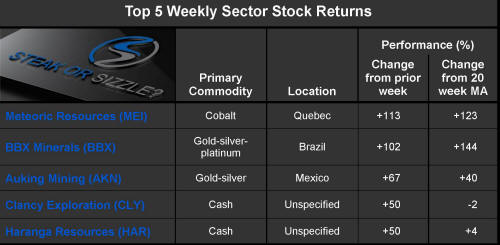The Current View
A lengthy downtrend in sector prices had given way to a relatively stable trajectory after mid 2013 similar to that experienced in the latter part of the 1990s and first few years of the 2000s.
The late 1990s and early 2000s was a period of macroeconomic upheaval during which time sector pricing nonetheless proved relatively stable.
Relative stability suggests a chance for companies genuinely adding value through development success to see their share prices move higher. This was the experience in the late 1990s and early 2000s.
Still vulnerable cyclical conditions were aggravated in the second half of 2015 by a push from investors worldwide to reduce risk. Sector prices were pushed to a new cyclical low. These conditions were largely reversed through the first half of 2016 although sector prices have done little more than revert to mid-2015 levels.
With a median decline in prices of ASX-listed resources companies through the cycle of 89%(and 30% of companies suffering a decline of more then 95%), the majority of stocks remain prone to strong 'bottom of the cycle' leverage in response to even slight improvements in conditions.
Has Anything Changed?
A 1990s scenario remains the closest historical parallel although the strength of the US dollar exchange rate since mid 2014 has added an unusual weight to US dollar prices.
The first signs of cyclical stabilisation in sector equity prices have started to show. This has meant some very strong ‘bottom of the cycle’ gains.
Funding for project development may have passed its most difficult phase at the end of 2015 with signs of deals being done and evidence that capital is available for suitably structured transactions.
Key Outcomes in the Past Week

Market Breadth Statistics

The diagram on page 1 tracking the duration of the current metal price cycle shows a continuing reversal of the gains which had been made through 2016.
The apparent price weakness reflects the inability of metal demand to conclusively exceed available supplies. This is likely to remain the case without a significant improvement in global growth momentum.

Crude oil prices have been edging lower as the major world producers (including the USA) have been unable to achieve a sustainable rebalancing of the market as any tendency to higher prices attracts new production.
While oil prices have changed little in the past year, related equity prices which had been leveraged to improved crude prices in 2016 have weakened. Both crude oil prices and the prices of oil and gas exploration and production stocks have now reverted to levels which prevailed a year ago.

U.S. bond yields have been tracking lower. The move has come despite equity markets implying relatively buoyant economic conditions. Bond yields are downplaying the likelihood of reflation and an acceleration in growth suggesting the possibility that one or other of the two markets is misunderstanding the outlook and vulnerable to re-pricing.

The U.S. dollar has continued to track lower as investors reappraise the outlook for relative interest rates.
The weaker U.S. dollar should have helped sustain U.S. dollar denominated commodity prices. The fact that commodity price weakness has coincided with the dollar move downward suggests that the underlying factors dictating metal market outcomes might be even weaker than the price action suggests. [gold/bond prices]

The weaker U.S. dollar has helped sustain higher gold prices which have also benefited from the reversal in bond prices.
The bond price/gold price connection will work in favour of gold but only to the extent bond yields continue to track lower.
The cyclical stage of the U.S. economy suggests limited downside for US bond yields despite the near-term shift in direction. More likely, yields will stabilise but remain vulnerable to periodically resurrected optimism about the U.S. Congress passing tax and regulatory reform legislation perceived to create a stronger growth environment.
.
The Steak or Sizzle? blog LINK contains additional commentary on the best performed stocks in the sector and the extent to which their investment outcomes are underpinned by a strong enough value proposition to sustain the gains.
